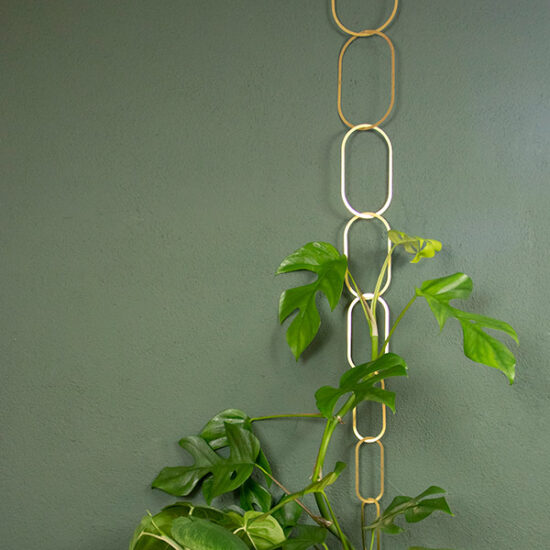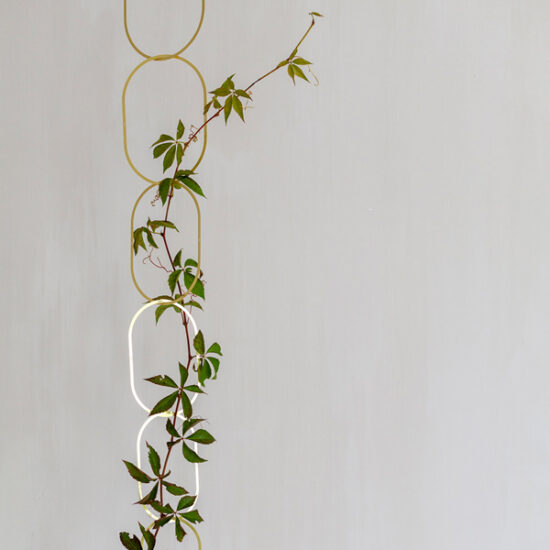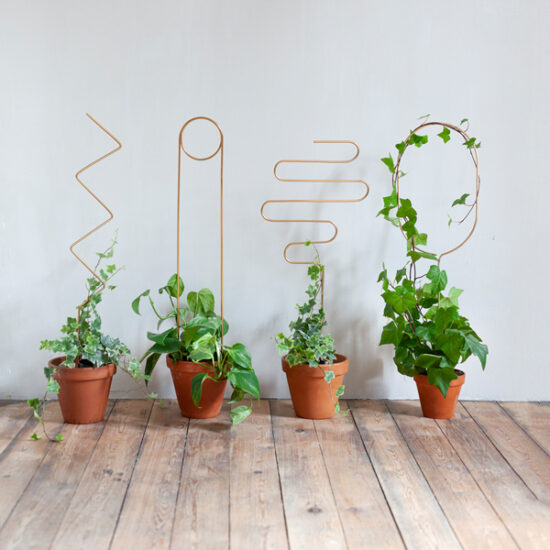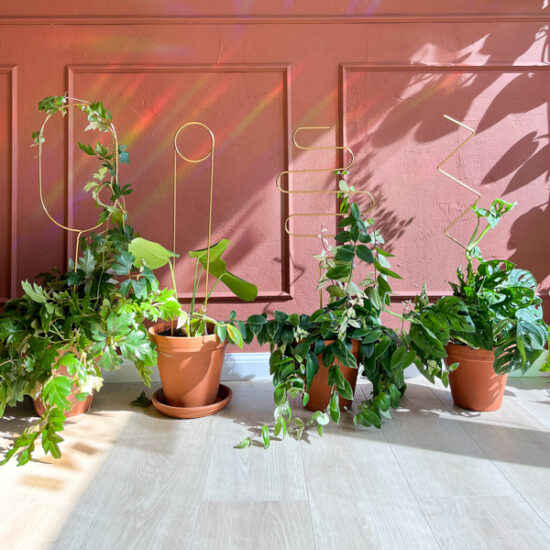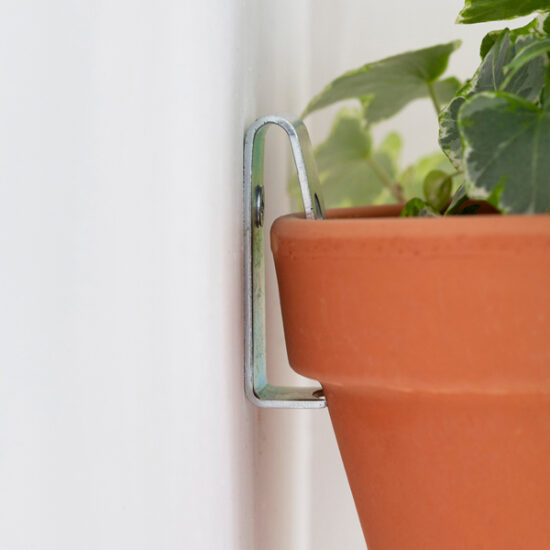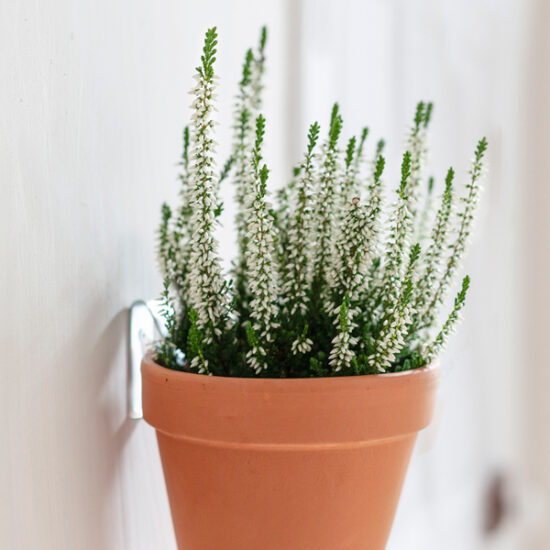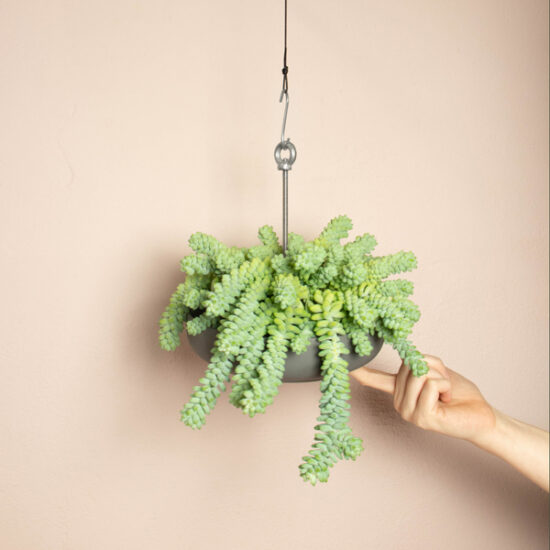Hang up your plants and let them climb
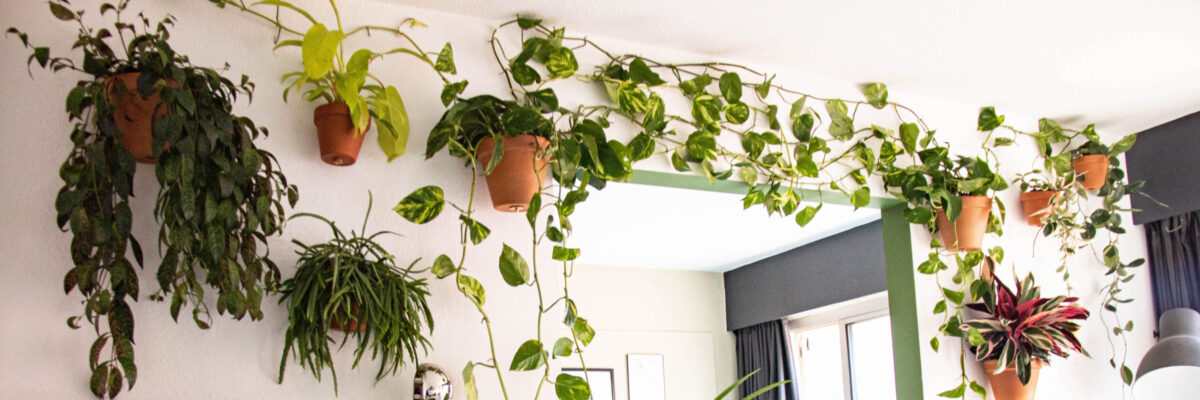
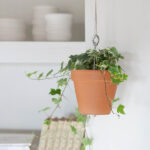
Creative tips for styling your home
When it comes to decorating your home, indoor plants are an easy and affordable way to make a big impact. They add a pop of color and brighten your space, but they’re also a proven way to purify the air, reduce your stress levels and improve your mood. Enough reasons to transform your home into an indoor jungle! And we don’t just mean to add houseplants on the floor, but to also display them in different and unique ways on your walls. Hang them up or let them climb, and let them decorate your walls with their various colors, shapes and textures.
We’ve got clever and discrete solutions to let you hang plant pots, mount them on your wall, or support climbing vines in style. So let your plants conquer your walls with Botanopia’s help!
Ways to hang up your plants
There are various ways to hang up your indoor plants, depending on what style you are going for. Our Bolty is a pot hanging system made of stainless steel, that will almost completely disappear in between your lush plants. It can easily be attached through the drainage hole at the bottom of your pot, leaving your plant the freedom to grow in all directions. No distracting or bulky rope construction, your plants stay in the spotlight, while Bolty does the heavy lifting very discreetly.
If you are more interested in a wall planter our wall mounting kit Clippy might be the right choice for you. Similar to the plant hanger, the suspension system will almost completely disappear behind the leaves, giving your hanging plant all the attention it deserves. The simple clips come in a set of 5, perfect for creating your own green wall at home. And the best thing, it’s very flexible and can accommodate a wide variety of pot sizes and shapes, as long as they have a rim.
How to hang plants from a wall?
The plant hanger Bolty can easily be suspended from your wall or your ceiling, or even from the side of large furniture items. You can suspend it from a hook in your ceiling, or mount an L bracket to your wall to hang your pot a little distance off the wall. Of course, you can also hang the Bolty on every other supportive structure in your home, like a curtain rod or a plant grid. Just make sure the structure can hold the weight.
Hanging up the wall mounting kit Clippy is also a very simple task. Just follow the instruction booklet. Screw the clip on the wall, slide the pot in it, adapt the size and you are done! It’s also great for outdoor walls, balconies or fences that need a little extra green.
How do you hang a heavy plant on the wall?
If you want to hang a heavy plant with the plant hanger Bolty, we advise you to use a sturdy hook and a mount it directly into a ceiling beam or stud for best support. The wall hanger Clippy can hold quite a lot of weight, just make sure you use the correct type of anchor for your walls. If you have hollow plasterboard walls, for example, you can either mount your Clippy on a wall stud, or use wall anchors specially designed for heavy loads in plasterboards. You’ll find a wide assortment of anchors at your local hardware store.
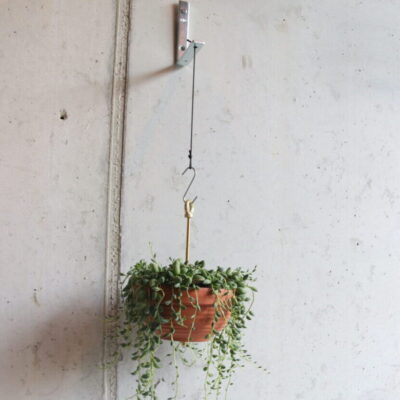
Before/After video
Watch this living room being transformed with plants on the wall
How do you hang plants without drilling holes?
Hanging your plants from the wall is a great way of displaying them in a unique and interesting way. One of the easiest ways to hang our plant hanger Bolty is by drilling a hook into the wall. But if you’re renting or if you’re just not fond of making holes, it might not be an ideal option for you. Luckily, there are other ways of bringing your plants up in the air.
A few of the most common ways are:
- adhesive hooks
- over-the-door hooks
- command hooks
- and hanging your plant on a curtain rod
Of course, the last one is technically not a way of bringing your plant on the wall, but it is still a nice option to decorate the space around your windows.
Just be careful with any adhesive solution, if it’s strong enough to hang plant pots from, it might also be strong enough to tear off the paint from your wall when it’s time to remove it. Always test in a discrete spot before you commit… It’s easier to patch a tiny screw hole in your wall, then to refinish a big area where the paint has been ripped off…
How do I water my hanging plants?
Be patient when you water your plants and always watch for overflowing and water dripping on the floor. Don’t forget that hot air rises and the closer to the ceiling the warmer and drier the air will be. Your hanging plant will probably need to be watered more often than your plants placed on the ground. That’s why we designed both Bolty and Clippy to be very easy to remove, so you can take the pot down entirely in a second, and water in the sink, shower, or a large plastic tub.
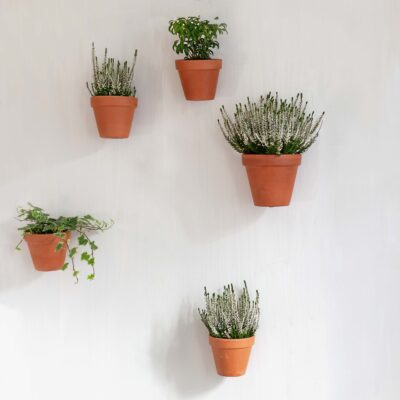
Do indoor hanging plants need drainage?
You do not need the drainage hole for your plant’s survival, but you should consider other measurements that help against over-watering.
Giving your indoor plant too much water is the most common way of killing it. The drainage hole allows the excess water to drain, preventing root rot, fungus and bacteria development. But if you remember a few crucial rules, your plant will also thrive without the hole in the bottom.
First of all, be careful with the amount of water you add to your plant since every drop is going to stay there. Water carefully and distribute it evenly throughout the pot. Another important point is to provide a drainage layer underneath the soil in the form of pebbles, stones, etc. In that way, the excess water can reach the coarse-grained layer faster, instead of sitting in the soil. It works as an over-watering barrier. If you chose an unglazed terracotta pot, the excess moisture can also evaporate through the porous clay walls. This makes it a good choice if you’re not confident in your watering skills.
If you’d like a visual aid, you can also use a Soil Checker. It’s a wooden stick with indentations, that you push in the soil of your plants. When you pull it back up, some soil will come up in the slots, so you can see and feel how moist the soil really is, all the way to the bottom of the pot. If the first 5-7cm (2-3 “) are dry, it’s time to water again.
Where should hanging plants be placed indoors?
When looking for a suitable place for your hanging plant, the same rules as for your other plants apply. Each plant has its own needs and preferred environment, so be sure to research your hanging plant before choosing a suitable spot. In general, find a spot you can easily get to that offers enough sunlight, gives your plant the best chances to stay alive and be healthy. If you place them high up, or in a more hidden spot, you are more likely to forget about them. Remember, that the heat goes up and a high hanging plant will need more water.
Why should I let my climbing plants climb?
Climbing plants have a built-in urge to grow upwards since they naturally want to be closer to the sun. Facing the sun, climbing plants will reach their full potential. Many aroids like monsteras, pothos and philodendrons will grow bigger leaves and a much thicker stem when getting the chance to grow upwards, supported on a structure. In nature, they climb on the trunks of other trees and plants to reach the sunlight. If you let your vines hang instead of climbing up, the leaves will grow smaller (but can still give a beautiful result on your walls).
Allow the climbers to grow upwards and they will thank you with a lush and healthy look.
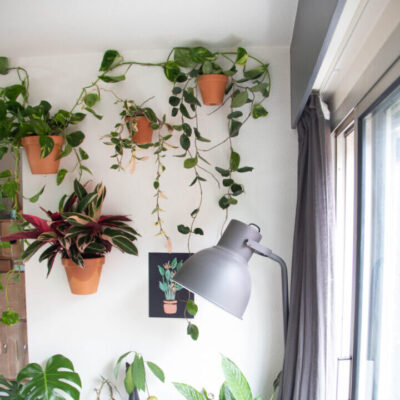
Add a pop of color to your living space with these inspiring and original things:
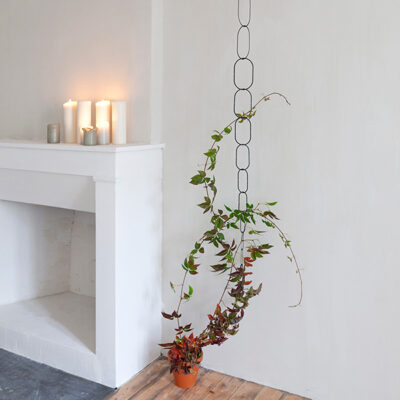
How do you attach climbing plants to interior walls?
Another beautiful way of adding some greenery to your walls is by letting climbing plants conquer your walls. Depending on the style you are going for and the structure of your walls, there are a few different ways to guide indoor plants on your walls. All of which don’t require drilling holes into your walls. The Botanopia climbing chain is an easy and elegant way to bring your plant up high and let them reach heights up to 1,90m. The modular design gives your climber enough space to hold onto, while the golden or black color adds a nice contrast to the green. Just hang the plant support on the wall (using a small nail or a pushpin), place the plant pot underneath it and wrap the plant stems around the chain.
If you want your plant to grow in different directions with a subtle supporting system you can use nails, wall clips or command hooks. With this method, all you have to do is place the system wherever you want to support the vine.
Combine the Clippy with one of the climbing methods for beautiful results.
What climbing plants grow well indoors?
Indoor climbing plants are a great way of adding a jungle vibe to your home. There are many different kinds that will love to conquer your walls and bring a bit of green to your interior.
- Heartleaf philodendron – one of the common indoor climbing plants and easy to take care of
- Ivy – several Ivy species are suitable indoor climbers, one of the most popular indoor plants that also grows well in less sunny places
- Pothos – very popular climber and works also well in hanging pots
- Inch plants – easy to grow and pretty to look at
- Creeping fig – houseplant with long stems that is easy to maintain healthy

